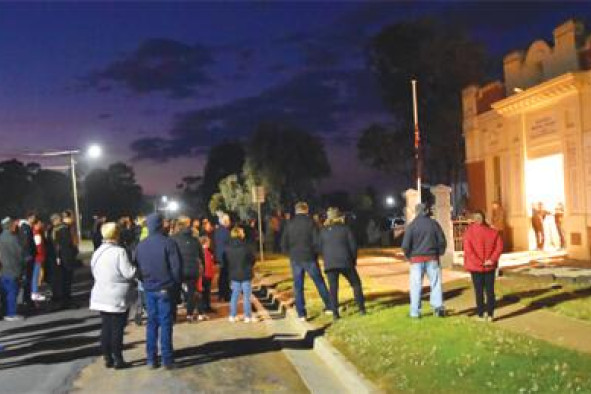General News
1 May, 2024
Don't let airbrush touch our Anzac spirit
By CHRIS EARL AS DEEP lead mining was petering out and Melbourne for the first time in history had a population greater than country Victoria, Australia and the world was on edge. The time was the second decade of the 20th century, 110 years ago to...

By CHRIS EARL
AS DEEP lead mining was petering out and Melbourne for the first time in history had a population greater than country Victoria, Australia and the world was on edge.
The time was the second decade of the 20th century, 110 years ago to be precise and dark clouds of war were looming.
Volunteer militia in Loddon communities, serving King and Empire, were alert and ready to enlist for action on the other side of the world.
The colonial spirit of adventure ready to be put to the test and show the powers of Britain that the fledgling nation on the other side of the world could, and would, make a contribution even greater than the weight of our gold.
When what we now call World War One was declared in July 1914, local men began to enlist. Some were among those who landed on the doomed beaches of Gallipoli, others arrived on the bloody Western Front.
Some like Bridgewater’s Private CT Atherton would be recognised for bravery in the field.
Atherton, had military service in his blood. A relative, General Sir Alex Cameron, had been knighted for conspicuous bravery at the Battle of Waterloo.
Atherton’s brother Hugh tried three times to enlist, even though when the Armistice was declared in 1918, he was still only 17 and working at the flour mills in Bridgewater.
Stories like that of the Athertons can be found in every local community, where soldiers were farewelled and welcomed home to the strains of local brass bands, or in the case of Pyramid Hill, joined by Scottish pipers living in the district.
These occasions were formalised with Anzac commemorations. Old soldiers still marching to the beat of service and receiving applause and appreciation from their townfolk.
More than a century later, the brass and pipe bands of Loddon communities are no more. The soldiers, and nurses, of World War One long gone to their eternal rest and increasingly joined from around Australia by those who followed those same footsteps of service in World War Two.
Much less than 7000 men who served in skies above Europe, in the jungles of Asia and on the Pacific in World War Two are still alive.
Every Australian who has taken up arms in the name of freedom and democracy would have preferred war had not come along and disrupted their lives and those of families and communities.
But they held firmly to principles and beliefs about what type of Australia, and world, they wanted for future generations and were prepapred to, if necessary, pay the ultimate sacrifice.
Their stories are so important in providing continual guidance in charting the future of our local towns.
Some stories will be shared tomorrow at Anzac commemorations. Many more remain to be discovered or rediscovered.
Last Sunday, I had the honour of launching the Pyramid Hill Historical Society’s latest book release, Scots Whae Hae.
Throughout that book, was reference to the local pipe band and its role on Anzac Day and at other important community and civic events.
That publication helps us share more of those stories and understand how those who served in the military in war and other conflicts from the Boer War through to today’s peacekeeping operations have shaped who and what we are today.
The current PC-mantra can see our past airbrushed from the history pages.
Anzac Day again provides the counter to any myopic in the appreciation and awareness of our history.
Tomorrow, take time to attend an Anzac Day service. Think about past service and sacrifice and how we can have history positively and respectfully guiding our future.